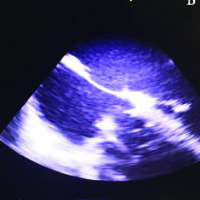Atrial septal aneurysm in Sub-Saharan Africa: From an asymptomatic incidental echocardiographic finding to a potential cause of cardio embolic stroke

All claims expressed in this article are solely those of the authors and do not necessarily represent those of their affiliated organizations, or those of the publisher, the editors and the reviewers. Any product that may be evaluated in this article or claim that may be made by its manufacturer is not guaranteed or endorsed by the publisher.
Accepted: 14 December 2020
Authors
Atrial Septal Aneurysm (ASA) is an abnormality of the interatrial septum that has continued to generate interest because of its rarity, asymptomatic presentation and possibility to cause cardioembolic stroke. There are many published accounts of atrial septal aneurysm in USA, Europe and Asia but very few published reports from sub-Saharan Africa. Our first case is a 48 years old female patient with type 1 ASA presented as an incidental finding during echocardiographic investigative procedures for other cardiac diagnosis. The second case is a 58 years old female with type 2L ASA, who presented with transient loss of consciousness lasting for 5 minutes. Our third case is a 25 years old male with type 5 ASA with heart failure who presented with exertional dyspnoea for 3 years. In this presentation, we ask questions about the reason for rare presentations and or publications of atrial septal aneurysm from Africa. We also re-examined the different associations of ASA as well as clinical presentations. ASA is an often asymptomatic but treatable cause of cardiovascular disease that includes cardioembolic stroke. A high index of suspicion is required to make the diagnosis during routine trans thoracic echocardiography and the availability of transesophageal echocardiography will definitely improve diagnosis and management of cases in sub-Saharan Africa.
SENIOR LECTURER,DEPARTMENT OF RADIOGRAPHY AND RADIOLOGICAL SCIENCES, UNIVERSITY OF NIGERIA ENUGU CAMPUS






